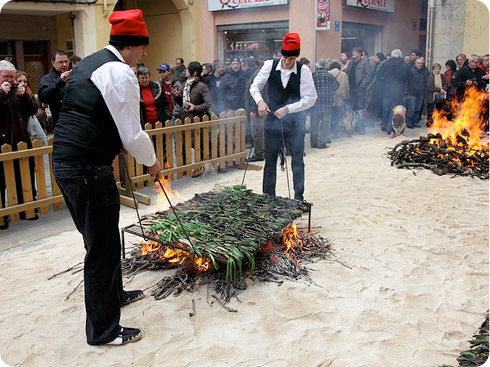The calçotada
Catalonya is full of traditions and customs: the castles, the sardanas, bread with tomato… but in the dining area should be noted that whenever a vegetable is grown in more areas of land Catalan and Spanish: the calçot.
Are harvested each year around 55 million calçots, 10% of which are labeled appellation of origin of the Protected Geographical Indication "Calçot de Valls". This production has a very important economic implications especially for the four major producing regions: the Tarragona, Baix Camp, Baix Camp and Alt Penedès.
On the origin of calçot there are several versions but the best known is that it attaches to in Xat de Benaiges, a farmer who lived in Valls in the late nineteenth century, the invention of this crop. Xat de Benaiges put a couple of outbreaks of fire and onions to a plate discovered by chance that in the early twentieth century had already happened common in many homes Valls.
Since then consumption has occurred calçotada or calçots a gastronomic feast known everywhere, especially in Catalunya. Calçots normally consumed during the months of January, February and March, cook with wood from branches or stands of vine and eaten accompanied by a typical salsa, salvitxada, which is a type Romesco sauce.
It was not until the middle of last century that became known calçot out of Alt Camp, especially the disclosure made by the gang artistic and humorous l'Olla.
La Festa del Calçot de Valls, held the last Sunday of January, celebrated its 100th anniversary in 1996. Held three contests: the contest calçots growers, the sauce contest calçotada and calçots eating contest.




















